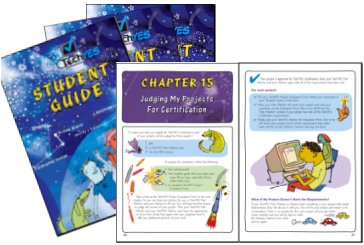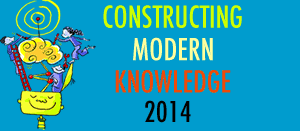For U.S. educators, there has been one primary source of funds from the federal government for educational technology over the past few years. It’s part of the No Child Left Behind (NCLB) Act, Title 2d, or Enhancing Education Through Technology (EETT). With the passage of the stimulus bill, there is new, additional funding in the range of $650M that will be shared between the 50 states, Washington D.C. and Puerto Rico, according to the same formula that governed the previous EETT funds.
By the way, this money is in addition to the funding that will be in the regular budget, currently $269M. You can’t exactly add those two numbers up, as they cover different time periods, but any way you slice it, this is a lot of money coming — and really soon. (Anyone interested in following this at a federal level should subscribe to Hilary Goldmann’s blog at the ISTE Connects website.)
The hope is that by using existing EETT mechanisms and rules, this money will quickly make its way to states, and then out to districts and service centers, creating or saving jobs and expanding technology-enhanced learning opportunities for all.
Ready, Get Set…. GO!
The key word there is quickly - so the time to get ready is NOW. The next few weeks should see a flurry of information as state education departments decide exactly how to do this. If you’ve been saying… gee, if we only had the money… this is your chance. Dust off those grant proposals, call consortium partners, and watch your state ed tech department closely — because this will happen FAST.
Now comes the shameless promotion — GenYES and TechYES have been the basis of hundreds of successful EETT projects. If you are looking at the power of technology to empower students, support teachers, and create a culture of shared ownership of learning at your school, you don’t have to reinvent the wheel or design your own curriculum from scratch.
GenYES is a curriculum and online toolset for student technology teams, either in a class or after school. GenYES students in grades 4-12 learn technology skills, project and collaboration skills, so they can teach teachers, do tech support, and share their technology skills with their school and community. GenYES combines the passion of youth for technology, the benefits of service-learning, support for teachers in their own classrooms, and provides all the resources to get a program up and running quickly. GenYES includes an online help desk where teachers can request help from a GenYES student - whether that help is to hook up a projector or plan a technology infused lesson. The really good news is that the EETT can fully fund GenYES, permanently.
TechYES and TechYES Science are project-based student technology literacy certification programs.  Printed and online materials guide students in grades 6-9 through the project-process, allowing students to show technology literacy with real world projects, either academic or personal. One of the NCLB goals is that all students achieve technology literacy by grade 8. TechYES offers a way to meet that goal using a project-based philosophy, because you can’t really show technology literacy through a multiple choice test. (TechYES in Action video)
Printed and online materials guide students in grades 6-9 through the project-process, allowing students to show technology literacy with real world projects, either academic or personal. One of the NCLB goals is that all students achieve technology literacy by grade 8. TechYES offers a way to meet that goal using a project-based philosophy, because you can’t really show technology literacy through a multiple choice test. (TechYES in Action video)
But whatever approach you take to the EETT funding, I hope you consider putting the emphasis on classroom technology that enhances the student experience, allows students control and ownership of their own learning, and gives teachers professional development that transcends old “sit and get” models.
Sylvia

I agree that EETT funding should be put towards educational technology in the classroom. I am currently a Math major student with an emphasis on secondary education and I am currently in a computers in education class and we have read and discussed a lot about integrating technology into the classroom. I feel it is very important to use technology in the classroom to aid the students learning. But I feel integrating technology has to be properly done by the teacher….the lesson plan should not be based on technology but instead technology should aid a teachers lesson plan. And technology should only be used in a lesson plan if it aid the students learning, so i feel it is vital for teachers to learn more and read about integrating technology into classrooms so that they know how to use technology properly in the classroom. Therefore, I feel some of the funding money should go to updating classrooms with technology and also teaching teachers how to properly use the technology that is integrated into their classroom. If a teacher is not properly taught how to use the technology they are using in their classroom it could possibly hurt instead of aid the students learning.
It’s nice to know more money is being provided for technology to be integrated into schools across the country. A HUGE problem with using technology in the classroom is the fact that several school districts just don’t have the money in their budge to do so. Adding this significant amount to funding will hopefully bring us one step closer to integrating more technology into schools.
As for the issue of integrating technology into the classroom being beneficial, it is how and when the integration is presented. A teacher cannot fully rely on the whole lesson being taught using technology. Instead, every teacher needs to learn when it is appropriate to use technology. It should be used to enhance the lesson, not teach the lesson. The teacher should never depend on technology, but instead use it as an aide.
“The hope is that by using existing EETT mechanisms and rules, this money will quickly make its way to states, and then out to districts and service centers, creating or saving jobs and expanding technology-enhanced learning opportunities for all.”
Hope is what a lot of people are clinging to these days and history will tell you hope alone is not enough. Believe me I know because I am one of those people who has many hopes for our future, but during these frustrating times I sometimes struggle to act on behalf of those hopes. This Stimulus bill is important on so many levels, especially to the Ed. Tech. community, so I’d like to see our web 2.0 savy communities pro actively reaching out to members of congress to make sure EETT standards and practices are not only met but exceeded. Please check out Wes Fryers blog post “U.S. Educational Technology Funding Updates” https://tinyurl.com/cs6xmo , there you will find some tips to help you reach out directly to elected members of congress.
I wrote an extended response to these ideas in my blog:
… Harper’s message excited me; he identified a potential source of support for MSAD 75 iTeams to use an evidence-based approach to help enhance the learning of all students in our district and, by example, the state. GenYES clearly has a marketing strategy here but I believe in the approach so, I looked at our state Department of Education’s site to learn more. I found several references to EETT but no current activity. Through the grapevine, I heard that the Department may focus on extending the Maine Learning Technology Initiative (MLTI statewide 1-to-1 laptops and professional development) from middle schools to high schools. While I appreciate and benefit considerably from the MLTI, we need support for innovations at all levels in the system. …
https://scspaeth.blogspot.com/2009/03/iteams-and-economic-recovery.html